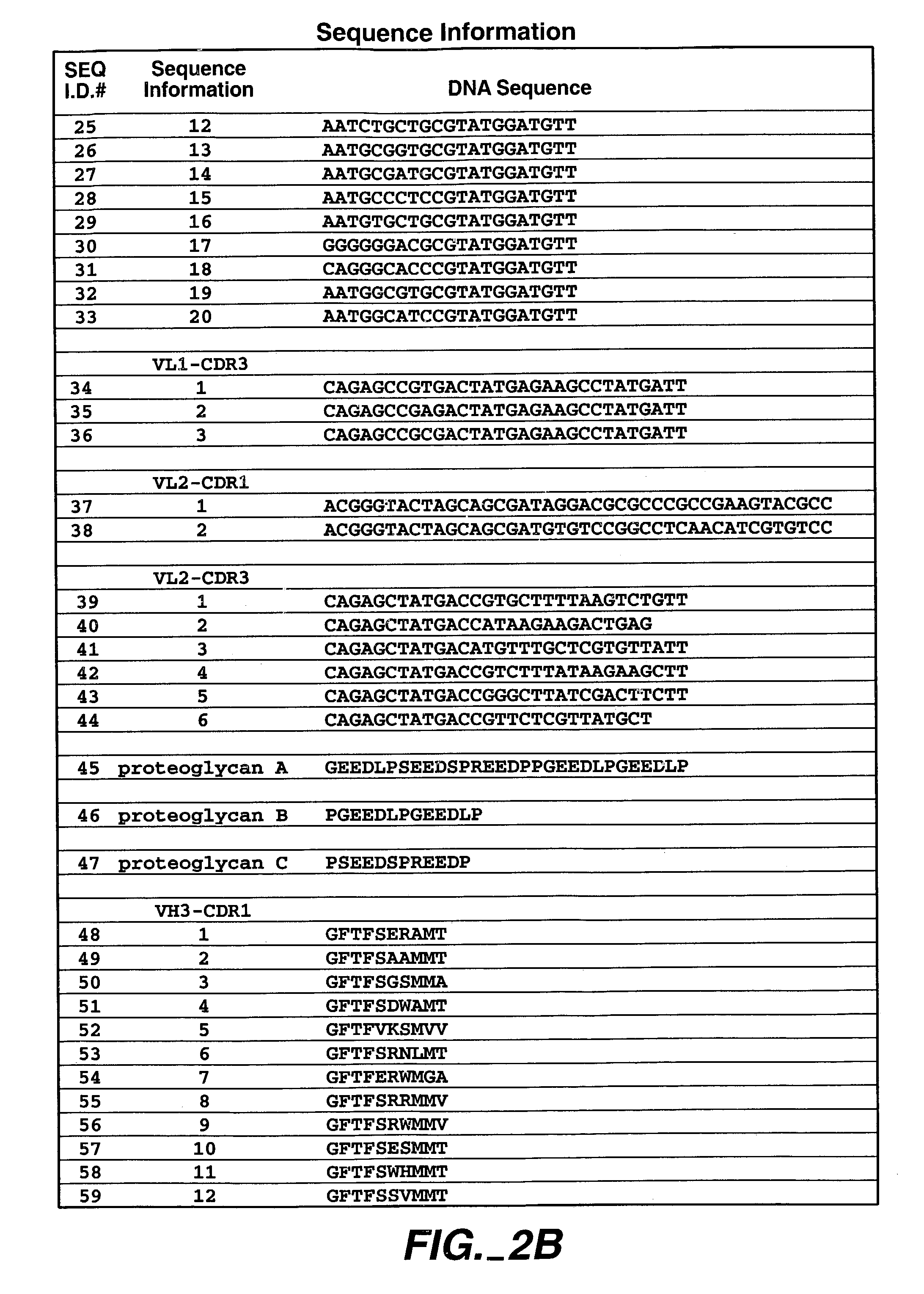Human antibodies that have MN binding and cell adhesion-neutralizing activity
a human antibody and cell adhesion-neutralizing technology, applied in the field of mn binding human antibodies, can solve the problems of ineffective anti-cancer treatment, and achieve the effect of inhibiting the cell adhesion of cgl-1
- Summary
- Abstract
- Description
- Claims
- Application Information
AI Technical Summary
Benefits of technology
Problems solved by technology
Method used
Image
Examples
example 1
Construction of a Human Combinatorial Antibody Library (HuCAL-Fab 1)
[0054]Cloning of HuCAL-Fab 1. HuCAL-Fab 1 is a fully synthetic, modular human antibody library in the Fab antibody fragment format. HuCAL-Fab 1 was assembled starting from an antibody library in the single-chain format (HuCAL-scFv; Knappik et al., J. Mol. Biol. 296 (2000) 55). HuCAL-Fab 1 was cloned into a phagemid expression vector pMORPH18 Fab1 (FIG. 3). This vector comprises the Fd fragment with a phoA signal sequence fused at the C-terminus to a truncated gene III protein of filamentous phage, and further comprises the light chain VL-CL with an ompA signal sequence. Both chains are under the control of the lac operon. The constant domains Cλ, Ck, and CH are synthetic genes fully compatible with the modular system of HuCAL (Knappik et al., 2000).
[0055]First, the Vλ and Vκ libraries were isolated from HuCAL-scFv by restriction digest using EcoRWDraIII and EcoRWBsiWI, respectively. These Vλ and Vκ libraries were cl...
example 2
Solid Phase Panning
[0058]Wells of MaxiSorp™ microtiter plates (Nunc) were coated with human MN protein in PBS (2 μg / well). After blocking with 5% non-fat dried milk in PBS, 1-5×1012 HuCAL-Fab phage purified as above were added for 1 h at 20° C. After several washing steps, bound phage were eluted by pH-elution with 100 mM triethylamine and subsequent neutralization with 1M TRIS-Cl pH 7.0. Three rounds of panning were performed with phage amplification conducted between each round as described above.
example 3
Subcloning of Selected Fab Fragments for Expression
[0059]The Fab-encoding inserts of the selected HuCAL Fab fragments were subcloned into the expression vector pMORPHx7_FS to facilitate rapid expression of soluble Fab. The DNA preparation of the selected HuCAL Fab was digested with XbaI / EcoRI, thus cutting out the Fab encoding insert (ompA-VL and phoA-Fd). Subcloning of the purified inserts into the XbaI / EcoRI cut vector pMORPHx7, previously carrying a scFv insert, leads to a Fab expression vector designated pMORPHx9_Fab1_FS (FIG. 4). Fabs expressed in this vector carry two C-terminal tags (FLAG and Strep) for detection and purification.
PUM
| Property | Measurement | Unit |
|---|---|---|
| Cytotoxicity | aaaaa | aaaaa |
| Cell adhesion | aaaaa | aaaaa |
Abstract
Description
Claims
Application Information
 Login to View More
Login to View More - R&D
- Intellectual Property
- Life Sciences
- Materials
- Tech Scout
- Unparalleled Data Quality
- Higher Quality Content
- 60% Fewer Hallucinations
Browse by: Latest US Patents, China's latest patents, Technical Efficacy Thesaurus, Application Domain, Technology Topic, Popular Technical Reports.
© 2025 PatSnap. All rights reserved.Legal|Privacy policy|Modern Slavery Act Transparency Statement|Sitemap|About US| Contact US: help@patsnap.com



